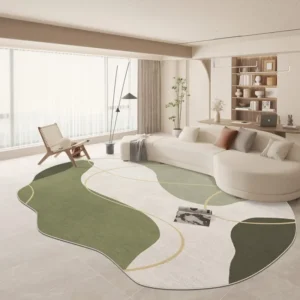
Ah, velvet. The very word conjures images of luxury, sophistication, and a touch of old-world charm. From plush sofas to elegant dresses, sumptuous pillows to heirloom draperies, velvet adds an undeniable richness to our lives. But let’s be honest, alongside that allure often comes a quiet dread. You know the feeling: that moment a spill happens, or you notice a persistent smudge. A whisper of anxiety turns into a shout – how do I clean this without ruining its glorious pile? The truth is, many balk at the prospect of cleaning velvet, fearing irreversible damage to its distinctive, soft surface. This apprehension stems from common misconceptions and a lack of precise knowledge.
But what if we could lift that veil of mystery? What if we could offer you a roadmap to impeccable velvet cleaning, ensuring its luxurious pile is not just preserved, but protected for years to come? This comprehensive guide is your answer. We’re here to tackle the velvet cleaning riddle head-on, providing you with battle-tested strategies and insider tips to maintain the pristine beauty of your cherished velvet items. No more guessing games, no more hesitation. We’ll show you how to confidently care for this regal fabric, guaranteeing its plush texture and vibrant appearance remain intact.
In the coming sections, you’ll discover the unique composition of velvet, understand why specific cleaning methods are paramount, and gain a treasure trove of actionable advice. We’ll delve into everything from preventative care and daily maintenance to tackling stubborn stains and rejuvenating flattened pile. By the end of this article, you’ll be equipped with the knowledge to approach any velvet cleaning challenge with confidence, knowing you have the tools to ensure your velvet retains its magnificent feel and look. Prepare to transform your approach to velvet care, ensuring exquisite pile protection guaranteed.
Understanding Velvet: More Than Just a Fabric
Before we can even think about velvet cleaning, it’s crucial to understand what velvet actually is. It’s not merely a material; it’s a specific weaving technique that creates its distinctive short, dense pile. This section will peel back the layers, exploring its history, types, and the unique characteristics that dictate its care. Grasping these fundamentals is the first step towards achieving reliable pile protection guaranteed.
The Anatomy of Velvet: How Its Pile is Formed
Velvet is characterized by its evenly cut pile, with a short, dense surface. This pile is created by weaving two thicknesses of material simultaneously on a special loom, then cutting them apart to create the pile. This process results in the soft, upright loops that give velvet its signature feel and luminous sheen. The direction of this pile is critical; brushing against it feels smooth, while brushing against its grain feels rougher and can push the fibers upright. Understanding this directional nature is fundamental for effective velvet cleaning.
- Warp and Weft: The foundational threads that give the fabric structure.
- Pile Yarns: The additional set of warp yarns that are cut to create the soft, upright fibers.
- Depth of Pile: Varies between types, influencing texture and durability.
Common Types of Velvet and Their Unique Characteristics
The term “velvet” itself is broad. Different fiber compositions and weaving variations lead to distinct types, each with its own cleaning considerations. Knowing what type of velvet you’re dealing with is paramount for successful cleaning and ensuring that delicate pile protection is guaranteed.
- Cotton Velvet: Durable and less prone to crushing, but can absorb moisture easily and shrink. Ideal for upholstery.
- Silk Velvet: The most luxurious and delicate. Known for its soft drape and subtle sheen. Extremely susceptible to water stains and crushing. Requires professional cleaning for most serious issues.
- Synthetic Velvet (Polyester, Rayon): Often more durable, less expensive, and resistant to stains than natural fibers. Easier to clean at home, but can sometimes feel less rich. Excellent for high-traffic furniture.
- Crushed Velvet: Achieves its crinkled, irregular texture through mechanical pressing or twisting. This intentionally distorted pile makes it more forgiving of minor imperfections.
- Mohair Velvet: Made from the hair of Angora goats, it’s incredibly durable, resilient, and resistant to crushing. A premium choice for high-end upholstery.
- Viscose Velvet: A semi-synthetic fiber from wood pulp, it drapes well but is prone to water staining and requires careful handling.
Expert Insight: “Always check the care label,” advises textile conservator Dr. Anya Sharma. “It’s your first and most reliable indicator of what your velvet can and cannot withstand. Ignoring it is the quickest way to compromise the pile.”
Why Velvet Cleaning is So Different: The Pile Predicament
Unlike flat-woven fabrics, velvet’s upright pile presents unique challenges. Dirt and dust can easily become trapped between the fibers, and liquid spills don’t just sit on the surface; they can wick down, causing stains and potentially flattening the pile. Aggressive scrubbing or incorrect cleaning solutions will matt the fibers, creating irreversible bald spots or an uneven texture. The goal of any velvet cleaning effort is to lift dirt without disturbing the delicate alignment of these fibers, thus maintaining the fabric’s signature softness and luster. This delicate balance is why specialized techniques for pile protection guaranteed are not just recommended, but essential.
Key takeaway: Velvet’s beauty lies in its pile. Any cleaning method must prioritize preserving this structure. Knowing your velvet type dictates your cleaning strategy.
Preventative Measures: The First Line of Pile Protection Guaranteed
Before a single stain appears, prevention is your most powerful ally in velvet care. Implementing proactive strategies can drastically reduce the need for intensive cleaning and ensures your velvet’s pile remains pristine for longer. This section focuses on easy, yet effective habits and treatments that form the bedrock of enduring pile protection guaranteed.
Velvet Placement and Environmental Considerations
Where you place your velvet furniture or how you store velvet garments plays a significant role in its longevity. Direct sunlight, extreme humidity, and high-traffic areas are the enemies of velvet’s delicate pile.
- Sunlight Fading: Prolonged exposure to direct sunlight can cause velvet to fade unevenly, especially natural fibers. Consider UV-protective window films or rotate items.
- Humidity Havoc: Too much humidity can encourage mildew growth, while too little can make fibers brittle. A stable indoor climate is ideal for preserving fabric integrity.
- High-Traffic Zones: Avoid placing velvet upholstery in areas prone to constant rubbing or pressure, which can flatten the pile over time. Think elegant lounge over busy entryway.
Regular Maintenance: Easy Steps for Everyday Luster
Consistent, gentle maintenance is far more effective than sporadic, aggressive cleaning. Small, regular efforts keep dirt from embedding and the pile from compacting.
- Gentle Brushing: Use a soft-bristled brush or velvet brush (designed specifically for this fabric) to gently brush the pile in its natural direction. This removes loose dust and lifts matted fibers. Perform this weekly or bi-weekly.
- Vacuum with Caution: A handheld vacuum with a brush attachment or a standard vacuum on a low-suction setting can be used for deep dust removal. Crucially, hover the nozzle slightly, rather than pressing down, to avoid crushing the pile.
- Spot Checks: Immediately address any small marks or spills with a dry, clean cloth before they set.
Protective Treatments and Fabric Guards
While prevention is key, sometimes an extra layer of defense is warranted, especially for velvet upholstery or high-use items. Fabric protectors can create a barrier against spills.
- Professional Application: Consider having new velvet furniture treated by professionals with a fabric guard. These treatments typically repel liquids, giving you more time to blot a spill before it penetrates the fibers.
- DIY Sprays: If opting for DIY fabric protector sprays, always test on an inconspicuous area first. Ensure the product is suitable for velvet and follow instructions meticulously to avoid sticky residues or discoloration. Products like Scotchgard Fabric & Upholstery Protector are popular for synthetics, but caution is advised for delicate natural velvets.
FAQ: Your Most Pressing Velvet Cleaning Questions Answered
Navigating the world of velvet cleaning can often lead to a myriad of questions. We’ve compiled some of the most frequently asked queries to provide clear, concise answers, bolstering your confidence in achieving unparalleled pile protection guaranteed.
Can I use a steam cleaner on velvet?
Using a steam cleaner on velvet requires extreme caution. While gentle steaming can sometimes help to lift and refresh matted pile, direct, prolonged, or high-temperature steaming can cause irreversible water marks, flatten the pile, or even shrink the fabric, especially with natural velvets like silk or rayon. If you attempt it, use a handheld steamer on the lowest setting, keeping it moving and at a distance of at least 6-8 inches from the fabric. Test on an inconspicuous area first, and always brush the pile gently afterward with a velvet brush to restore its direction. For most delicate velvets, professional steaming is recommended.
How do I remove water stains from velvet?
Water stains are a common woe for velvet owners, often leaving a distinct ring or mark due to the disruption of the pile. To address fresh water stains, gently blot (do not rub!) the area immediately with a clean, dry cloth to absorb excess moisture. Once dry, you might try gently brushing the pile with a soft velvet brush to lift and even out the fibers. For dried water stains, a very light mist of distilled water followed by immediate gentle blotting and brushing might help. Some experts suggest using a hairdryer on a cool setting while brushing to help “fluff” the pile. If this doesn’t work, a fabric protector designed for velvet or professional intervention is your next best step to ensure pile protection guaranteed.
Is dry cleaning safe for all types of velvet?
No, dry cleaning is not universally safe for all types of velvet. The suitability of dry cleaning depends heavily on the velvet’s fiber composition. Natural fiber velvets (silk, cotton, rayon) are often candidates for professional *dry cleaning*, as water can easily damage their delicate pile. However, even within natural fibers, specific solvent requirements vary. Synthetic velvets (polyester, nylon) typically respond well to gentler water-based cleaning or spot treatments. Always defer to the care label’s instructions. If the label indicates “S” (solvent-based cleaning only) or “Dry Clean Only,” then professional dry cleaning is the safest option. Discuss any concerns with your cleaner to assure the appropriate method for optimal pile protection.
Can I use rubbing alcohol to remove stains from velvet?
Using rubbing alcohol (isopropyl alcohol) is a popular DIY method for certain types of stains, particularly ink or grease, on *synthetic* velvets. Alcohol acts as a solvent, breaking down oily residues without introducing a lot of moisture. However, it can be extremely harsh on natural velvet fibers (silk, cotton, rayon), potentially causing discoloration, stiffening, or permanent damage to the pile. Always test thoroughly on an hidden spot first. Apply sparingly with a clean white cloth, blotting the stain, not rubbing. Then, blot with a damp cloth to remove any residue and allow to air dry, gently brushing the pile when dry. Exercise extreme caution; when in doubt, consult a professional or choose a gentler cleaning method.
My velvet is flattened; how can I restore the pile?
Flattened velvet pile is a common issue, often caused by prolonged pressure or friction. Restoration is often possible, especially for minor flattening. Start by gently brushing the affected area against the grain with a soft-bristled velvet brush. If this doesn’t work, a gentle steaming technique can be highly effective. Hold a handheld steamer (on a low setting) 6-8 inches away from the velvet, allowing the steam to lightly penetrate the fibers without soaking them. As the steam lifts the fibers, gently brush them upright. Alternatively, for smaller areas, a damp cloth placed over the flattened spot and then gently ironed (iron hovering, not touching the velvet, on a low setting) can help. Always ensure the velvet is completely dry before using it or applying more pressure, and finish with a full, gentle brushing for optimal pile protection guaranteed.
Conclusion: Mastering the Art of Velvet Care for Lasting Beauty
We’ve journeyed through the intricate world of velvet, demystifying its unique characteristics and unveiling the secrets to its impeccable maintenance. From understanding the delicate anatomy of its pile to implementing preventative measures and mastering targeted cleaning techniques, you are now equipped with an arsenal of knowledge. Our goal was to provide not just methods, but a philosophy: that with the right approach, exceptional velvet cleaning and pile protection are not just achievable, but guaranteed.
Remember, velvet is a living fabric. It responds to gentle care, methodical attention, and a deep respect for its unique structure. Embrace the power of prevention, act swiftly on spills, and always choose the mildest method first. Whether you’re refreshing a beloved armchair, caring for a luxurious garment, or maintaining elegant drapes, the principles of delicate handling and purposeful brushing will serve you well. Don’t let the “velvet cleaning riddle” hold you hostage any longer; empower yourself with these expert strategies to ensure your opulent textiles maintain their plushness, vibrancy, and unparalleled appeal for generations.
Now, go forth and protect that magnificent pile! Need more detailed insights on specific stain types or looking for recommended specialized tools? Continue your velvet care journey by exploring our related guides on velvet upholstery deep cleaning or restoring vintage velvet.
Content Disclaimer
The information provided in this article is for general informational and educational purposes only and is not intended as a substitute for professional advice. While we strive to provide accurate and up-to-date information, velvet care can be complex and results may vary based on the specific type of velvet, the nature of the stain, and the cleaning methods employed. Always test any cleaning solution or method on an inconspicuous area first. For valuable items or stubborn issues, consulting a professional textile conservator or dry cleaner is strongly recommended. The author and publisher are not responsible for any adverse effects resulting from the use of the information contained herein.
Categories
- Accent Walls & Ceilings (61)
- Art Curation & Gallery (62)
- Bedding Style Trends (68)
- Bedroom Makeover (81)
- Bohemian & Eclectic Styles (58)
- DIY & Budget-Friendly Decor (65)
- Eco-Friendly Design (62)
- Furniture Care (71)
- Home Decor & Design Ideas (162)
- Home Wellness Spaces (59)
- Integrated Outdoor Living (67)
- Japandi Style (61)
- Kids and Nursery Decor (59)
- Living Room Decor (79)
- Mix & Match Techniques (73)
- Modern & Contemporary Design (66)
- Rug Sizing & Placement (73)
- Scandinavian Design Inspiration (20)
- Seasonal Home Decor (79)
- Small Space Solutions (73)
- Wall Art & Painting Tips (77)
Recent Comments
Archives
Product Gallery
-
 Large Area Green Rugs for Bedroom Nordic Living Room Decoration Shaped Carpet Irregular Plush Lounge Rug Home Thick Washable Mat
Rated 5.00 out of 5$54.94 – $346.41Price range: $54.94 through $346.41
Large Area Green Rugs for Bedroom Nordic Living Room Decoration Shaped Carpet Irregular Plush Lounge Rug Home Thick Washable Mat
Rated 5.00 out of 5$54.94 – $346.41Price range: $54.94 through $346.41 -
 Nordic Style Rugs for Bedroom Morandi Living Room Decoration Carpet Large Area Geometry Lounge Rug Home Cloakroom Non-slip Mat
Rated 5.00 out of 5$39.46 – $597.66Price range: $39.46 through $597.66
Nordic Style Rugs for Bedroom Morandi Living Room Decoration Carpet Large Area Geometry Lounge Rug Home Cloakroom Non-slip Mat
Rated 5.00 out of 5$39.46 – $597.66Price range: $39.46 through $597.66 -
 Irregular Shapes Living Room Decoration Carpet Modern Style Rugs for Bedroom Home Thicken Plush Rug Fluffy Soft Lounge Floor Mat
Rated 4.83 out of 5$55.84 – $347.37Price range: $55.84 through $347.37
Irregular Shapes Living Room Decoration Carpet Modern Style Rugs for Bedroom Home Thicken Plush Rug Fluffy Soft Lounge Floor Mat
Rated 4.83 out of 5$55.84 – $347.37Price range: $55.84 through $347.37











